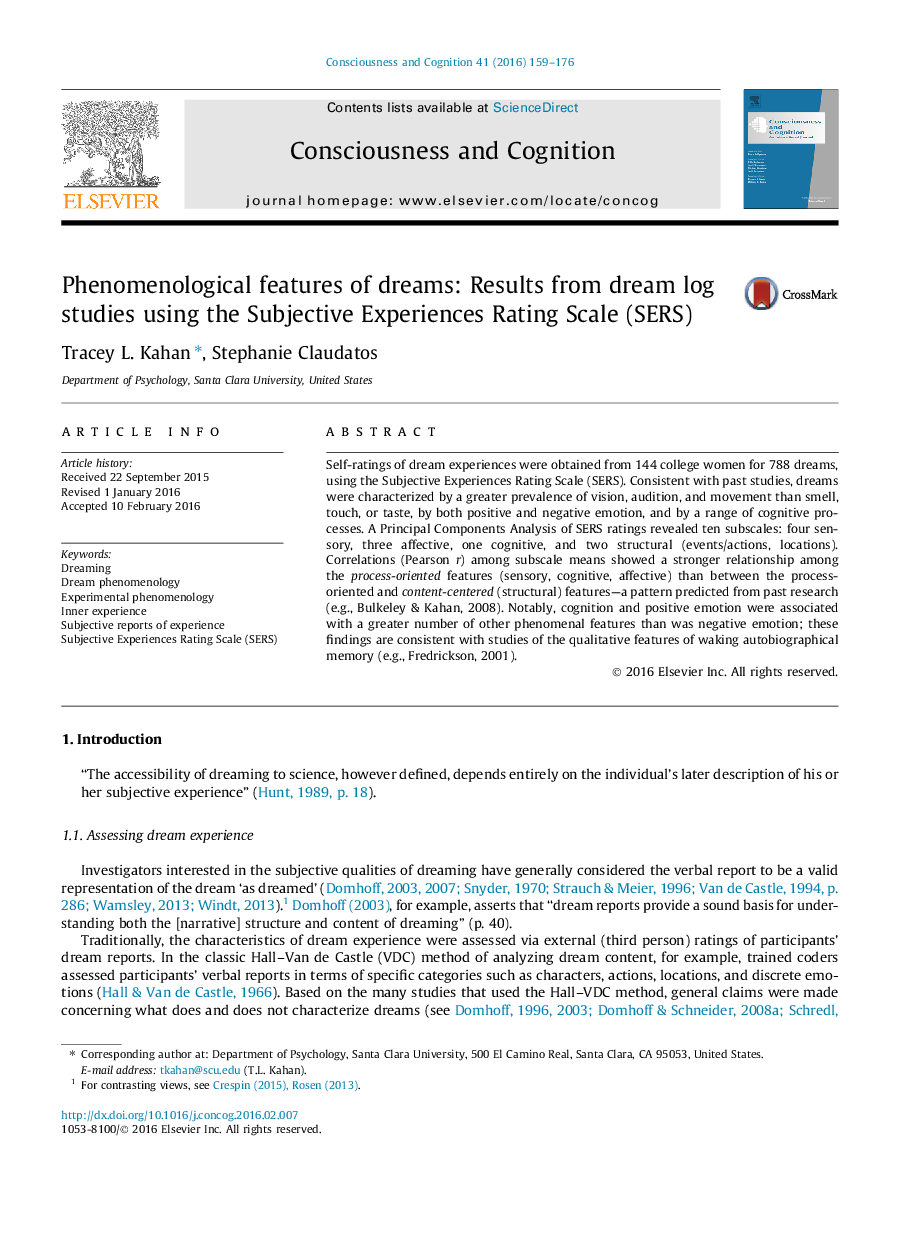| Article ID | Journal | Published Year | Pages | File Type |
|---|---|---|---|---|
| 7288681 | Consciousness and Cognition | 2016 | 18 Pages |
Abstract
Self-ratings of dream experiences were obtained from 144 college women for 788 dreams, using the Subjective Experiences Rating Scale (SERS). Consistent with past studies, dreams were characterized by a greater prevalence of vision, audition, and movement than smell, touch, or taste, by both positive and negative emotion, and by a range of cognitive processes. A Principal Components Analysis of SERS ratings revealed ten subscales: four sensory, three affective, one cognitive, and two structural (events/actions, locations). Correlations (Pearson r) among subscale means showed a stronger relationship among the process-oriented features (sensory, cognitive, affective) than between the process-oriented and content-centered (structural) features-a pattern predicted from past research (e.g., Bulkeley & Kahan, 2008). Notably, cognition and positive emotion were associated with a greater number of other phenomenal features than was negative emotion; these findings are consistent with studies of the qualitative features of waking autobiographical memory (e.g., Fredrickson, 2001).
Keywords
Related Topics
Life Sciences
Neuroscience
Cognitive Neuroscience
Authors
Tracey L. Kahan, Stephanie Claudatos,
